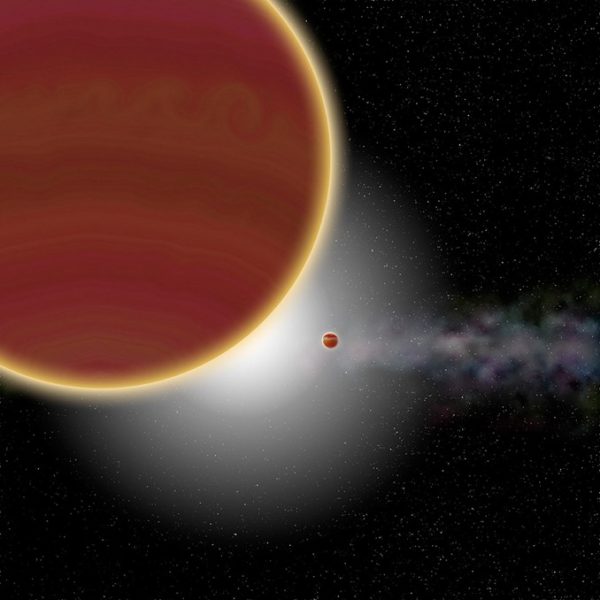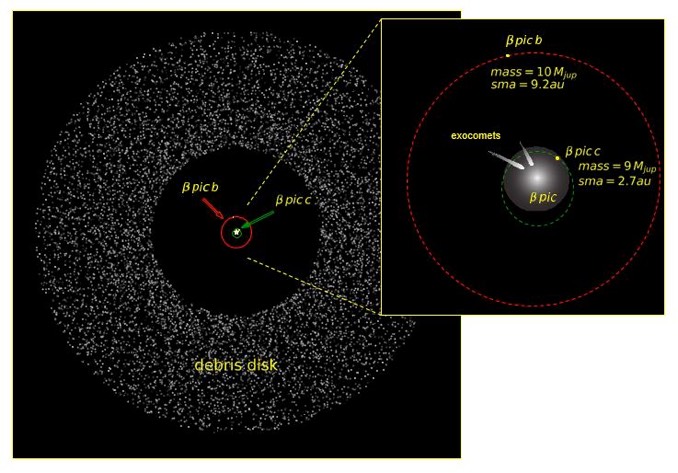Second giant planet found orbiting Beta Pictoris – Astronomy Now – Astronomy Now Online

Analysing 10 years of high resolution spectroscopic data collected by the HARPS instrument at the European Southern Observatory’s La Silla Observatory in Chile, astronauts have found clear indications of a second giant planet orbiting Beta Pictoris, a young star just 63 light years away that hosts a solar system in the process of coalescing.
Astronomers already knew of one gas giant planet, Beta Pictoris b, cometary activity and a vast disc of debris surrounding a star nearly two times more massive than the Sun. The newly discovered world has the mass of nine Jupiters and orbits its host star every 1,200 days at a distance roughly equivalent to that of the asteroid belt in Earth’s solar system. Beta Pictoris b orbits 3.3 times farther out.
The newly found planet was detected using the radial velocity technique, that is, by precisely measuring the subtle motion of Beta Pictoris caused by the gravity of the orbiting planets tugging it back and forth as revealed by slight changes in the starlight’s spectra.
The HARPS instrument – the acronym stands for High Accuracy Radial velocity Planet Searcher – is a high-resolution echelle spectrograph used with La Silla’s 3.6-metre telescope that is dedicated to the search for exoplanets.

The work was especially complex because Beta Pictoris periodically pulsates, requiring researchers to subtract those effects to reveal motions caused by the orbiting planets. The indirect discovery of Beta Pictoris c is the first such detection using the radial velocity technique with a target star that pulsates to a significant degree.
Beta Pictoris is thought to be just 23 million years old, meaning the two gas giants are no more than about 20 million years old.
The research team was led by Anne-Marie Lagrange, an astronomer with the French National Centre for Scientific Research (CNRS) at the Institut de Planétologie et d’Astrophysique de Grenoble.
The Beta Pictoris system is now known to feature at least two gas giant worlds, along with a vast disc of gas and dust. Image: P. Rubini/A.M. Lagrange






